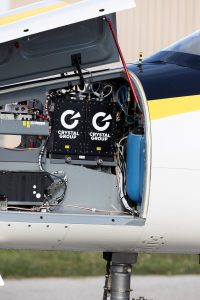Future-proofing AI for military applications
One of the biggest challenges in defense technology is keeping AI solutions operational for years—even decades. While commercial industries move through rapid technology refresh cycles, defense programs require long-term support, stability, and reliability.

The problem? Most AI hardware is designed for short commercial lifespans, often becoming obsolete within five years. Defense agencies need future-proof computing solutions that maintain cutting-edge performance over extended deployments.
The challenge: AI’s rapid evolution vs. defense program timelines
AI is advancing at an unprecedented pace, with faster processors, more powerful GPUs, and increasingly complex algorithms being introduced every year. However, defense programs operate on much longer lifecycles, often spanning 10 to 20 years.
“A lot of this industry-leading technology is designed for commercial markets, and they’re becoming obsolete in less than five years,” said Morgan Uridil, advanced program pursuits manager at Crystal Group.
Defense agencies face two key obstacles:
- Ensuring long-term availability of AI hardware – If a critical computing component becomes obsolete, mission readiness can be compromised.
- Balancing security and compliance with cutting-edge technology – AI deployments must adhere to strict security requirements, making frequent upgrades challenging.
How Crystal Group and Intel provide long-term AI solutions
Crystal Group works closely with Intel to ensure that defense organizations have access to long-term AI computing solutions. Intel’s product strategy includes:
- Multi-generation compatibility – Intel maintains consistent processor architectures and packaging, allowing future upgrades without requiring full system redesigns.
- Extended product availability – Many Intel products remain available for purchase for 10+ years, ensuring defense customers can source the same components over time.
- Security and compliance – Intel’s AI solutions are hardened for government use, ensuring defense agencies meet security standards without sacrificing innovation.
“For the longest time, we would not only change our chip architecture design, but we would also change our packaging,” said Gretchen Stewart, chief data scientist at Intel Corporation. “Intel almost always designs packaging that is compatible with multiple versions of the Xeon and Core processors.”
By integrating Intel’s long-term roadmap strategy into Crystal Group’s ruggedized AI systems, defense teams can future-proof their technology investments while ensuring seamless performance for years to come.
Staying ahead of AI advancements
As AI-driven defense applications continue to evolve, Crystal Group is proactively engineering solutions that anticipate future requirements. Our approach includes:
- Scalable architectures – Our systems support modular AI expansion, allowing customers to integrate new processing technologies as they become available.
- Rapid prototyping and testing – By working with Intel’s latest AI chipsets, we evaluate new technologies early, ensuring defense customers get proven, reliable solutions.
- Partnership-driven innovation – Ongoing collaboration with Intel’s AI research teams helps us stay ahead of the next wave of AI advancements.
“When our customers come to us with ambitious requirements, being able to communicate and enable that view of what is possible in their solution landscape is critical,” said Uridil. “The relationship between Crystal Group and Intel facilitates us being able to anticipate those challenges.”
Future-proof AI, ready for defense missions
By combining Intel’s processor longevity with Crystal Group’s ruggedized AI expertise, we provide defense teams with high-performance AI solutions that are built to last.
Learn more
See how Crystal Group ensures AI-driven defense solutions remain operational for the long haul. Explore more here.